The Model Mayhem interview: Sierra McKenzie
Sierra McKenzie is a full-time professional freelance model based in Seattle. She’s known for her beautiful hourglass figure and striking red hair, but that combination barely scratches the surface of what she has to offer. Sierra also does her own hair and makeup, and travels extensively throughout the US, often with a sizable wardrobe, creating an irresistible package of looks, skills and professionalism.
Sierra stopped by the Model Mayhem office in Los Angeles as part of her West Coast tour and in a wide ranging interview discussed her career, the pressure to be thin as a model and how to overcome it, what it takes to be a successful and her efforts to promote freelance models.
– MM EDU
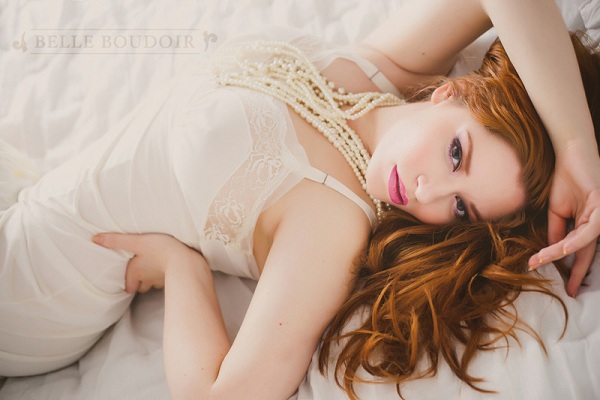
Model: Sierra McKenzie; Photographer: Cheryl Jones
MM EDU: Tell us about your background and how you became a model.
Sierra McKenzie: I grew up in Alaska and right after I turned 18 I escaped to Seattle. I traveled around a little bit doing some jobs, but it was very hard for me to get a job in Seattle because in 2008 there were no real jobs available. So, that’s when I started modeling. It was something I would do as a side project when I couldn’t get another job. At that point I was still applying for other jobs because I felt like I needed one, but I was already making enough money modeling.
MM EDU: Was it scary to not have a regular paycheck?
Sierra: When I was 18 I applied for a job at Barnes & Noble and when I turned in my application they told me that they were getting people with four-year English degrees applying for the same work. I was modeling for a few of my friends in art school and the transition to modeling professionally was in part because I needed some way to support myself. In a way I’m lucky I didn’t get the safe job at Barnes & Noble because that made me take modeling seriously.
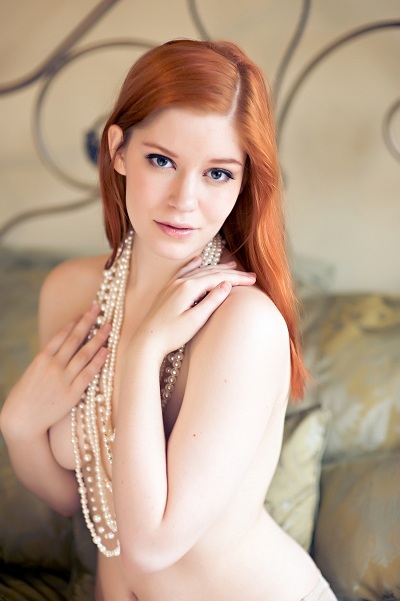
Model: Sierra McKenzie; Photographer: Cheryl Jones
MM EDU: Who were you first modeling for?
Sierra: I modeled for a few friends, but primarily it was my sister. I shot film and she shot digital and we used each other as models. We were very comfortable around each other; we did each other’s makeup, and gained a lot of experience on both sides of the camera.
MM EDU: And that led to your first paid modeling job?
Sierra: Indirectly. Someone saw the photos and said I should put up a model portfolio. I didn’t even totally know what that meant, but I Googled “online model portfolio” and found Model Mayhem. My very first paid gigs came from Craigslist and Model Mayhem. I met the photographers that booked me at Starbucks and we’d leave to either shoot at their studio or outside. And I got paid.
I was only 18 and not as naturally confident as I would like to pretend to be. I sort of had to fake it until I made it, but I thought to myself, “Yes, I’m a model and I’m going to do this. Everything will be fine.”
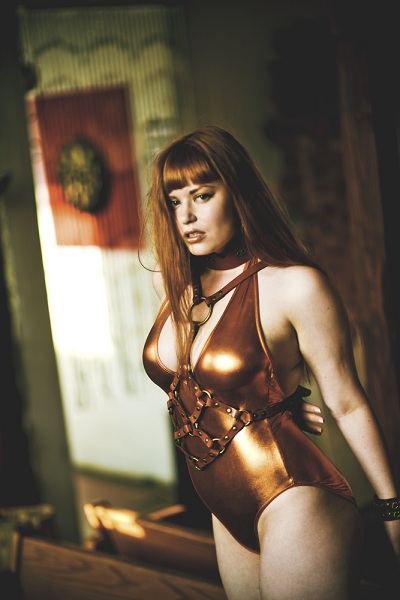
Model: Sierra McKenzie; Photographer: Jeff Waters Photography
MM EDU: How did you overcome not being agency standard for a model?
Sierra: I’m definitely not agency standard. I’m too short and too wide for straight size modeling but I’m also too short and too skinny for agency plus size modeling.
If I was taller and had the same proportions I could definitely be an agency plus size model, but even if I did I would have to be within an inch or two of those measurements. It doesn’t allow for natural fluctuations in body type or for your body type to change. That’s why I think freelancing is so amazing. As a freelance model you’re in charge of your own body.
My cousin is 6’ tall (since she was 14 years old!) and she modeled for an agency. She traveled all over the world, had amazing campaigns and then one day she sent me an email saying that her agency wanted her to lose another inch off her hips. She couldn’t do it because it wasn’t possible and so she asked for my advice on freelance modeling.
I think that’s one of the things about agency modeling that is detrimental to the girls who are in it that don’t necessarily have those body types naturally. I also think it’s detrimental to people consuming that media to only see one body type, to only see people of a certain height and weight modeling. It’s really important for people who aren’t comfortable and feel that they aren’t a model to start modeling. That’s something that’s good for everybody because it takes time to build up that confidence.
It was definitely not there when I started modeling because I was the same height as now but I was the skinniest I had been in my life. I was size 2 when I started modeling, which for me is very small, but I was that size because I had been sick and lost a lot of weight. After that I kept trying to be skinny to fit this idea of what a model has to look like. I thought to myself, “Yes, I’m skinny now. I can model.” But, as I kept modeling I started to gain back some of my natural weight and I started to refill into my natural body type. I was so stressed out trying to stay skinny; trying to make sure I didn’t get a single zit, trying to make sure I was perfect so that I would keep getting hired.
That pressure was too much and I decided to quit modeling. It was too stressful, it was horrible and it was unhealthy. So I quit modeling for three months, but missed some aspects of it and that’s when I said, “Screw it! If I’m going to be modeling I’m not going to stress out over what I look like every single day. I’m going to try to be healthy, but I’m not going to try to look like something I’m not. If people hire me, they hire me, and if they don’t, they don’t.”
I changed my entire perspective and instead of trying to fit what I thought a model should look like I decided to be very honest and open about what I look like in real life. I never wanted to show up to a shoot and have someone say, “Oh, you’re so much fatter than I thought,” or “Your skin is terrible!” I didn’t want anyone to be surprised when they hired me. I just took the risk and it has worked out so far.
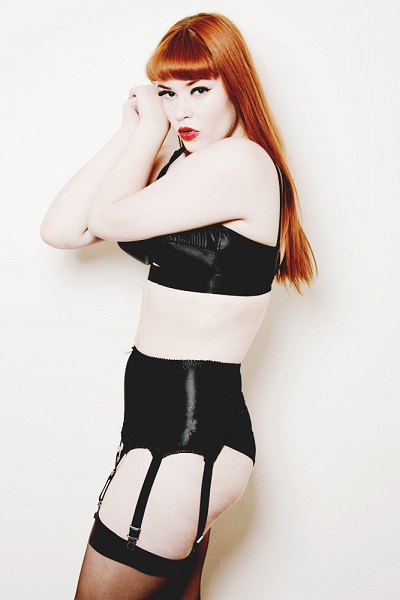
Model: Sierra McKenzie; Photographer: Jeff Waters Photography
MM EDU: That sounds like it was really hard, but in the end it was the decision to be yourself that paid off. How did that transition affect your work and the type of jobs you got?
Sierra: When I first started modeling I did a lot of typical glamour work. My first big shoots, which probably supported me for the first six months of my modeling career, were things like Met Art, and they were quite sexual. I was comfortable doing them but not very excited because they’re very repetitive. They want you to be skinny, they want your hip bones to show, etc., and it’s more like if you’re a model within these parameters you’ll get hired simply because you fit the parameters they’re looking for.
The main difference in my work now is that people hire me because I’m different. They’re hiring me for me, they’re hiring Sierra McKenzie, and that makes me feel different. It gives you the freedom to be yourself instead of being hired because you meet the requirements for this shoot. You’re being hired for your body type, your hair color, for yourself, and that’s the big difference.
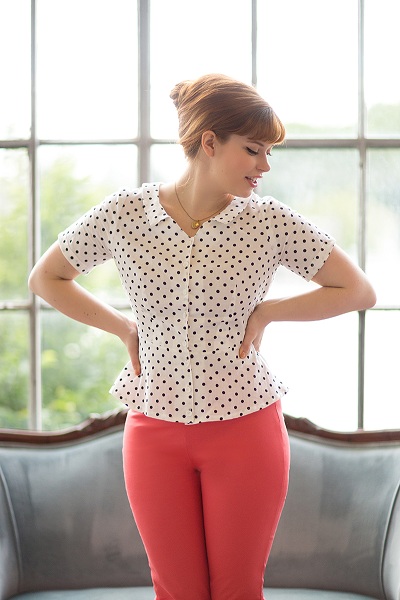
Model: Sierra McKenzie for Colette Patterns
MM EDU: Has that limited the type of modeling you do?
Sierra: I do a huge range of modeling. The trick I found to get the most work while still staying true to who I am is to be precise in my look but broad on the amount of genres I do.
MM EDU: Can you explain that?
Sierra: I try to stay consistent with my look. For example, I rarely change my hair color, but I’ll model many genres, from art nudes, glamour and boudoir to commercial. I model commercially for designers, even designers that don’t usually hire people with my body type, but who hire me as the person from a different body type.
I’ve even been given a garment from a designer who said he needed a girl with a big enough bust to model it and that I was the ideal girl for it.
MM EDU: Do you have a preference for one genre over another?
Sierra: Genre wise I really like fashion nudes. I like elements of styling and clothing in fashion but I also love nudes. It’s like a happy medium between something new, exciting and stylized versus something raw and organic. Nudes are interesting as a genre because you can experiment with a range of poses and expressions. It’s not like commercial, which is always with a smile.
Commercial is sometimes my least favorite to shoot because you have to sit there, laughing and smiling for an hour and you’re faking the laughter, which isn’t easy for that long. Commercial sometimes feels more awkward to me than being naked, which is more natural.
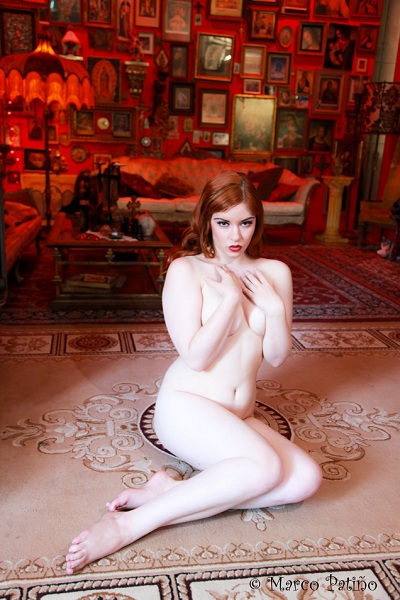
Model: Sierra McKenzie; Photographer: Marco Patino
MM EDU: In an article you wrote for MM you said, “It’s okay to be the curvy model, the bald model, the short model, the model that always has a different hair color. A lot of the things that make you nervous about the idea of modeling can be what sets you apart and intrigues photographers and fans.” Can you expand on that?
Sierra: It was really just me saying, “I’m going to be myself and see what happens.” I’m not the only model that has done that. For example, for a long time models were not supposed to have tattoos, but now you see many tattooed models. They were the girls that said, “I have a bunch of tattoos and people now hire me because of, not in spite of, my tattoos.”
The same thing can be said of more unusual hair colors. It’s those differences that can make you unique. I get work as a curvy model for that same reason.
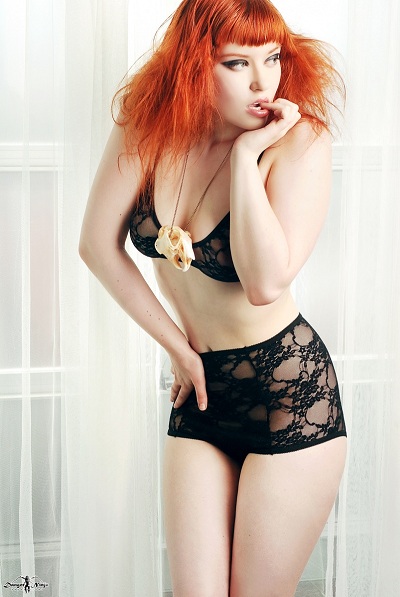
Model: Sierra McKenzie; Photographer: Danger Ninja Production
MM EDU: You have a wide range of skills and experience, from your posing ability to doing your own hair and makeup, having acting experience, etc. Which of these do you consider your greatest strengths as a model?
Sierra: I definitely think it’s a mix. Some of the things you mentioned fall into the category of skills you can provide as a professional. You show up, arrive on time, have references, do your own hair and makeup, etc. These are the kind of things that are becoming the standard for a professional freelance model.
Some of the other things are more unique. I think posing is one of my strong suits. I’m able to convey many different emotions with posing. Sometimes a photographer wants to do 100 shots in the next 10 minutes and I have the experience to do that.
I feel I’ve developed a couple of styles but the main style I actually pose with incorporates a little more movement than when I first started modeling. There’s definitely an art to it and it’s something I’ve developed. I like to watch other freelance models do their thing, too, because it’s really interesting to see some similarities from point A to point B, but you also get to see different posing styles. It’s so unique for each model and comes from the hundreds of shoots they’ve done to get to that point. I find that really fascinating.
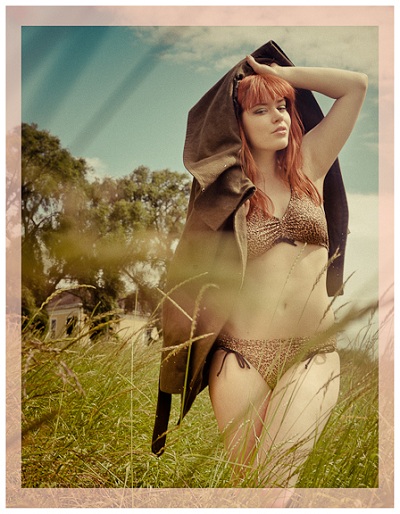
Model: Sierra McKenzie; Photographer: David Miller Photoworks; Clothing Designer: Bonsoir Bella
MM EDU: You travel extensively for work. Can you give us a glimpse of what that’s like?
Sierra: Actually, asking about traveling was the number one question I kept getting after that article went live. I think it was at least a dozen girls who asked, “How do you actually travel?” It’s very hard for models to find any information about traveling.
I love that I’m able to do trips just because I’m a model. I would never be able to save money to do these trips otherwise. On this trip I’ve already stopped in Portland and Sacramento. We’re stopping here in Los Angeles for 5 days and then going up to San Francisco. I would never be able to do this type of trip if it wasn’t for work and that’s kind of amazing. But it can be draining. Sometimes I’ll get to the point where I’m only home for five days at a time in months.
That can drive you a little crazy. I get to the point where I want my stuff because I’m sick of packing and unpacking all the time. Even packing for each shoot requires packing a whole suitcase, unpacking a whole suitcase, and then packing a whole suitcase.
When you’re doing that on the road it’s so much work because you’re constantly in and out of suitcases. This past year I booked a whole month where I didn’t travel. It was something I needed to keep my sanity and luckily I have enough repeat work in Seattle to do that.
Some models travel constantly and they don’t even have a home base. I don’t think I could do that. At least I have a home base and I’m happy for that for my own sanity.
As for the logistics of how to travel, I’ve done a few different things. On this road trip I’ve booked work on the way. I figure out and set different travel dates between each place based on population. I also have an actual travel list of Model Mayhem profiles (with links) from people who have tagged my wall saying they want to work with me or sent me a message saying they want to work with me. It’s organized by city and state and I’m able to see that in Los Angeles I have 15 people who have expressed an interest in booking me. Those are great leads!
I can do the same thing for Miami or any other location. I can book shoots from the interest I already have in a place. So on road trips like this I’ll just try to figure out how many days to stop along the way and I’ll book as many shoots as possible in those days, while still having room to get from one location to another and to sleep at night.

Model: Sierra McKenzie; Photographer: Jeff Waters Photography
MM EDU: That sounds like you have a great system in place. Is most of your traveling work pre-booked or booked while on the road?
Sierra: I also look at casting calls and that’s where I get a lot of my new work. In my experience most casting calls get put up two weeks before the shoot. So, two weeks before I travel somewhere I start looking at casting calls for that location. That’s in terms of road trips, but for flying it can get tricky because you can get stranded. I know a lot of models who have lost money on trips because they’ll have cancellations, which are a huge and unfortunate problem in the industry, but it’s just the way things are. Models often get stranded without enough money to even get back home sometimes and that’s real big problem. I try to eliminate that risk and not let that happen by counting airfare as cash.
My rates are typically $100 an hour, so if you buy me a $200 plane ticket I will work with you for two hours. That way my travel expenses are covered even in the event of a cancellation and if I go there and don’t get a single other gig, at least I won’t be broke. That is one of the best tricks when going to a major city, like Los Angeles or New York. For smaller cities I’ll go if expenses are paid and I get at least a full day’s work. And that’s how I manage to travel as much as I do without getting stuck somewhere without money. Otherwise it’s easy to find yourself in a difficult position if you travel somewhere without that security.
MM EDU: Do you have any tips for looking great despite the toll of traveling?
Sierra: I think when you’re traveling for shoots it’s important to go over every email from every shoot you’re doing and make sure you bring everything you said you’re going to bring. For example, before this trip I had to look through 20 different emails about how many bikinis I’m supposed to bring.
When you’re traveling in a car it’s nice because you can bring a full makeup and hair kit. Traveling on a plane is a little harder because you have to consolidate what you’re traveling with. Before I started modeling I traveled so light. I would bring a backpack and 3 changes of clothes that would all work together — the type of travel packing you see on TV tips for bringing a dress and a jacket that will pair with other things. But when you’re traveling as a model, you’re going to bring a whole bunch of stuff, and part of it is accepting that you’re going to look like a crazy person when you travel for two days and have three suitcases. Sometimes that’s just the way it is.

Model: Sierra McKenzie; Photographer: L A U B E N H E I M E R
MM EDU: How much did you pack for this trip?
Sierra: On this trip with me I have one huge suitcase that is all dresses on the bottom and normal separates on the top, with a huge pouch full of accessories and jewelry. I have another smaller suitcase that only has underwear, swimwear and shoes, but it is packed to the brim with underwear, swimwear and shoes!
I also have my full makeup kit, full toiletry bag, and a backpack for on-the-road crazy stuff. My hair and makeup kit is huge and has a million different hot tools, every single brush and bobby pin, wrinkle release spray, lint rollers, little Shout stain remover wipes and safety pins. I’m sure I’m forgetting lots of stuff that’s in there.
MM EDU: What’s your least favorite aspect of traveling?
Sierra: Road trips are usually the most fun because you get to go with someone and stop on the way and do things. But a lot of my shoots in the past year are in these weird places that I’ve flown to where you travel alone, which means going through airport security by yourself, getting on the plane by yourself, shooting, shooting, shooting, getting back to your hotel by yourself, waking up for the next day and shooting. It’s a lot of being alone, surprisingly, and a lot of just functioning. It’s a lot less glamorous than some people imagine but it’s part of the job.
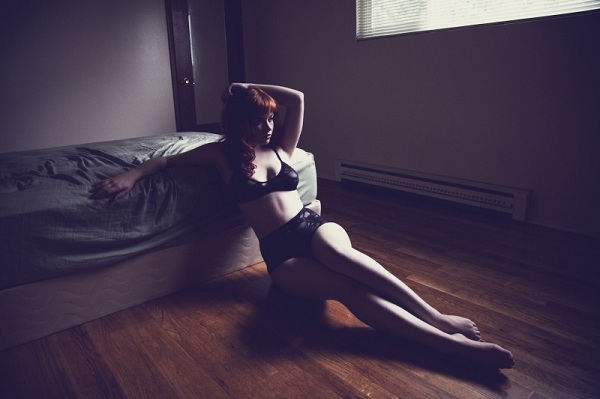
Model: Sierra McKenzie; Photographer: kg; Hair Stylist: Andy Tseng
MM EDU: Have you ever traveled internationally for work?
Sierra: I have not done that since I started modeling, but it is definitely something I would love to do. It’s a lot harder to convince someone to pay for your trip to London than it is to New York, but maybe some European photographers reading this will be inspired and book me!
MM EDU: Where would you want to go?
Sierra: I want to go to Iceland, partly for work and for fun, but I really want to go to France. I feel that’s somewhere with a great mix of talented photographers and artists, and also a fun place to visit. I would need to learn French, though.
MM EDU: Looking back to where you were when you started modeling at the age of 18, what advice do you wish you had or would give to someone starting out as a model?
Sierra: That is exactly the perspective I wrote that article from –what I wish I really would have known from that first day I thought about modeling. So if you haven’t read it yet, I suggest doing that, but a brief summary would be: know your limits, know that it’s going to be work, and try not to stress out about your body type or your body shape. Tackle whatever is stressing you out about the physical aspects of modeling and just start modeling. It’s OK if you have to fake it for a little bit. Pretty soon you’ll start to get comfortable with it and wonder why you ever worried about those things.
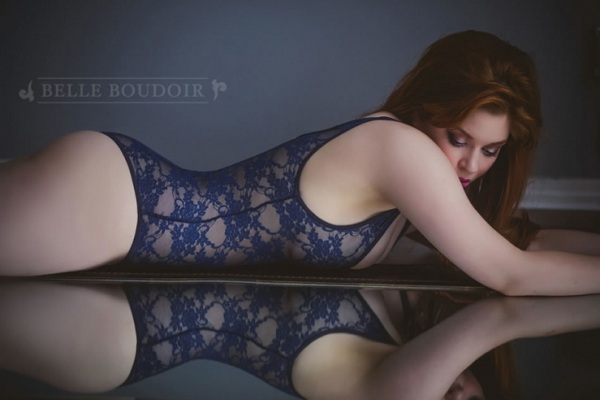
Model: Sierra McKenzie; Photographer: Cheryl Jones
MM EDU: Do you have anything exciting coming up that you’d like to mention?
Sierra: I just launched freelancemodels.tumblr.com. I want it to be a place for celebrating the benefits of freelance modeling and all the stuff we talked about. I’m going to be talking to girls who are professional freelance models who want to talk about the challenges that part of the industry presents. I wanted somewhere that is specific to freelancing, specific to freelance models and the people who hire freelance models. I’ll address the issues of why freelance models are hired, why they’re preferred over agency models, etc. I want it to be valuable resource for models.
MM EDU: You have a personal website and Facebook, Tumblr, Twitter, Instagram and Model Mayhem accounts. What role does social media play in your career as a freelance model?
Sierra: I spend hours a day on a computer, even when I’m traveling. That’s kind of behind the scenes or behind the curtain of what freelance modeling really is. It is hours of responding to casting calls on MM and Craigslist and replying to every email and private message you get on each of those sites. That’s just responding to correspondence you’re getting, but you also have to update all of your images and be an active part of the community.
My Tumblr has become kind of my dumping ground. I don’t have space in my portfolio, and no one is going to look through a portfolio with thousands of images, so I use Tumblr as the place for current work, like photos I’m getting back this week. But they’re all different and I think it’s kind of a balancing act for everyone who follows you on each different site. You have to update them without posting identical information on each one so that someone doesn’t get annoyed when they follow you on Instagram and Tumblr and see the same thing over and over. Try to define your parameters and a personality for each of your websites or accounts.
My Model Mayhem profile is very professional because it’s the kind of facts you need if you’re going to contact me for a shoot. My Tumblr is more of my personality, and a look at recent photos. Then on Instagram I try to show more personal behind the scenes stuff. I don’t put my actual professional photos up there at all. It rewards you for following multiple social networking sites. So that’s kind of been my trick there, but it’s literally so many hours just doing that part. It can get tedious and at times you just have to convince yourself to sit outside and force yourself to do one more hour of updates.
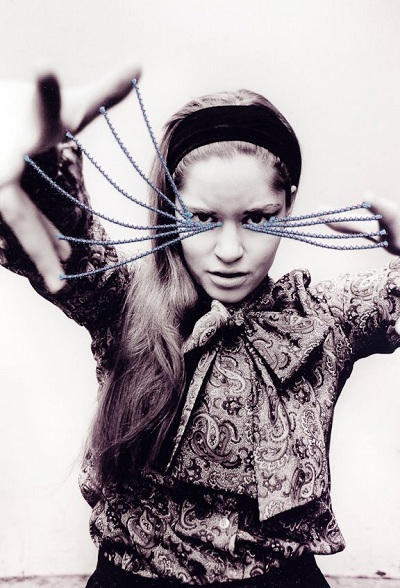
Model: Sierra McKenzie; Photographer: David Miller Photoworks
MM EDU: But it’s all that hard work behind the scenes that can really pay off in the long run. People often forget this is a job and especially when freelancing it’s you who has to put in all those hours to make it work.
Sierra: You really do; you need to. If I take a week off from responding, like I’m on a trip for a week and decide I’m not going to deal with casting calls, there will be a gap two weeks later where I have no work scheduled. That’s the thing that’s hard to realize when you’re first starting out. You will not have consistent work unless you consistently contact people and consistently respond to everyone.
MM EDU: Finally, you’ve been on MM since 2008. You mentioned that a lot of your earliest work came from MM and you’ve shot with over 100 photographers from MM alone. What does MM mean to you?
Sierra: MM is valuable. It’s the resource that allows freelance models to exist in a professional context. It’s the only site out there with the volume of people on it to be able to connect with to make it a job. I think of all the things I love about freelancing and those things exist because of MM. It wouldn’t be possible without that resource and I think that’s really positive and awesome. It is the only reason I have this job. I wouldn’t be in this line of work otherwise.
MM EDU: Thanks for stopping by. Enjoy your time in LA and the rest of your road trip.
Sierra: Thanks!



